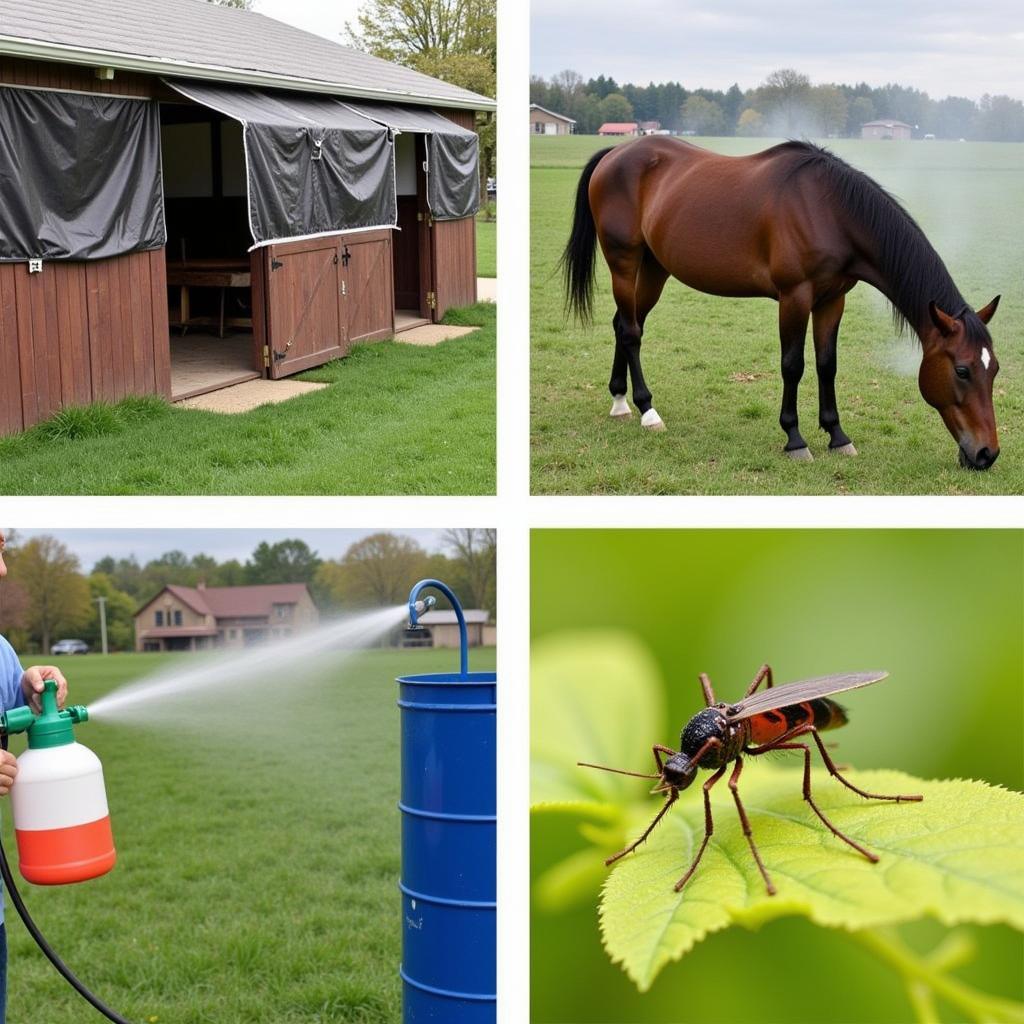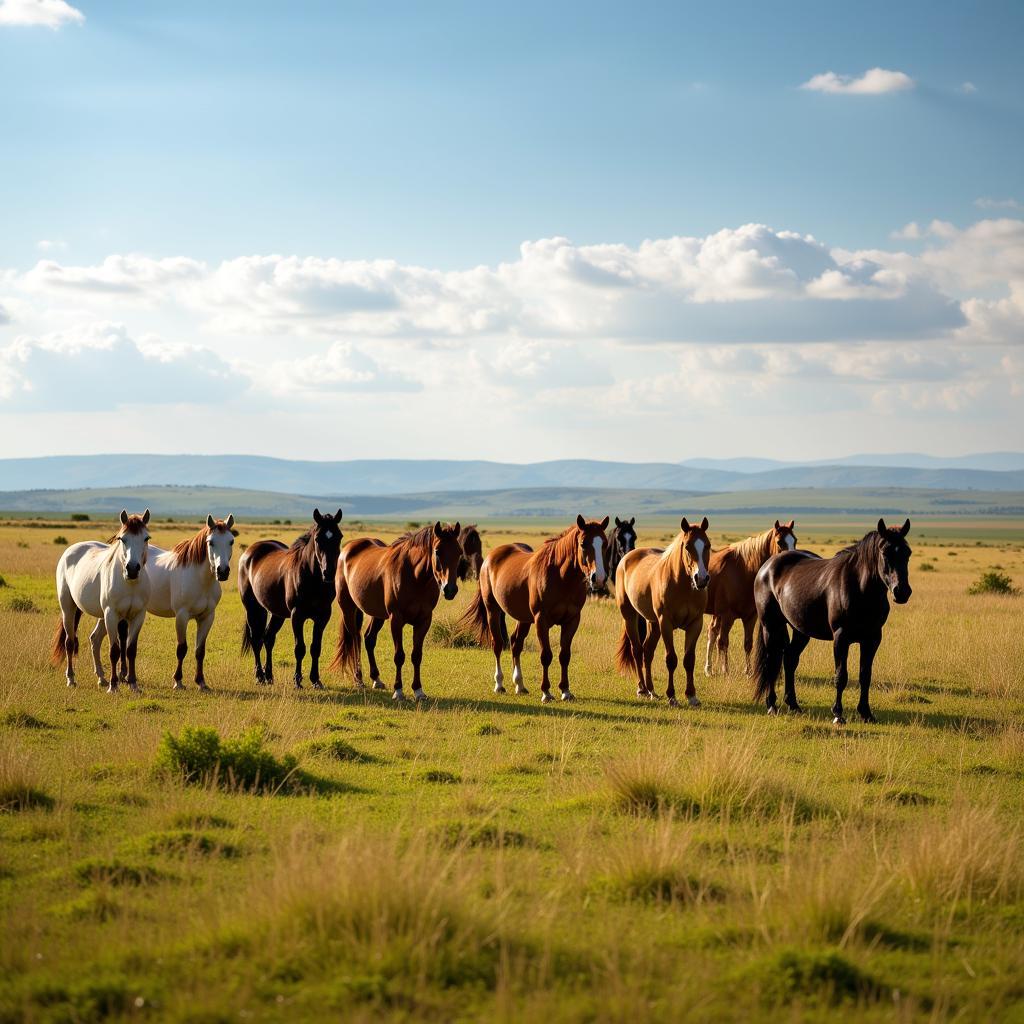African Horse Sickness Prevention: A Comprehensive Guide
African horse sickness (AHS) is a devastating viral disease that affects horses, donkeys, and mules. Preventing this disease is crucial for safeguarding equine populations across the globe. This guide provides essential information on effective AHS prevention strategies.
Understanding African Horse Sickness
AHS is transmitted primarily through the bite of infected Culicoides midges, also known as African biting flies. The disease manifests in various forms, ranging from mild fever to severe pulmonary edema and hemorrhage. Mortality rates can be alarmingly high, particularly in susceptible horse breeds. Understanding the virus structure and its transmission vector is essential for implementing effective preventative measures. More information can be found at African horse fever transmition vector.
The Role of Vectors in AHS Transmission
Culicoides midges are the primary vectors responsible for spreading AHS. These tiny insects thrive in warm, humid environments and are most active during dusk and dawn. Their feeding habits contribute significantly to the rapid spread of the virus among equine populations. Controlling these vectors is a cornerstone of AHS prevention strategies.
Understanding the lifecycle and behavior of these african biting fly is crucial for developing effective control measures.
Clinical Signs and Diagnosis of AHS
Recognizing the clinical signs of AHS is vital for early diagnosis and prompt intervention. These signs can vary depending on the form of the disease, but common symptoms include fever, respiratory distress, swelling around the eyes and head, and sometimes, colic. Laboratory testing is essential for confirming AHS diagnosis and differentiating it from other similar diseases.
Prevention Strategies for African Horse Sickness
Effective AHS prevention involves a multi-pronged approach targeting both the virus and its vectors. Vaccination is a crucial component of prevention, offering significant protection against the disease. Vector control measures, such as stabling animals during peak midge activity and using insecticides, also play a vital role.
Vaccination: A Critical Defense
Vaccination is the most effective method for preventing AHS. Several vaccines are available, offering protection against different strains of the virus. Consulting with a veterinarian to determine the appropriate vaccination schedule for your horses is essential.
“Vaccination offers the best chance at protecting your horses from this deadly disease,” says Dr. Anika Nkosi, a veterinarian specializing in equine infectious diseases in South Africa. “Regular vaccination, coupled with effective vector control, is crucial for mitigating the risk of AHS outbreaks.”
Vector Control: Minimizing Exposure
Minimizing exposure to Culicoides midges is crucial for AHS prevention. Stabling horses during peak midge activity, using insect repellents, and installing mosquito nets in stables can significantly reduce the risk of transmission. Environmental management practices, such as eliminating breeding sites for midges, are also essential. Learn more about the virus structure at african horse sickness virus structure.
 Vector Control Measures for AHS Prevention
Vector Control Measures for AHS Prevention
Biosecurity Measures: Protecting Your Herd
Implementing strict biosecurity measures is essential for preventing the introduction and spread of AHS within a herd. Quarantining newly arrived horses, disinfecting equipment and vehicles, and limiting contact with outside animals are crucial steps in maintaining a disease-free environment. Here are a few slides to read further about the topic: african horse sickness ppt.
“Implementing robust biosecurity protocols is paramount for safeguarding your herd,” advises Dr. Joseph Mwangi, an epidemiologist based in Kenya. “Early detection and rapid response are crucial for containing potential outbreaks and preventing widespread transmission.”
Conclusion
African Horse Sickness Prevention requires a comprehensive approach incorporating vaccination, vector control, and biosecurity measures. By implementing these strategies, horse owners can significantly reduce the risk of this devastating disease and protect their valuable equine companions. Remember, prevention is always better than cure when it comes to AHS. Here’s a look at the impact of AHS in 2019: african horse sickness 2019.
 Healthy Horses Grazing in African Landscape
Healthy Horses Grazing in African Landscape
FAQ
-
What is the most effective way to prevent AHS? Vaccination is the most effective method for preventing AHS.
-
How is AHS transmitted? AHS is primarily transmitted through the bite of infected Culicoides midges.
-
What are the clinical signs of AHS? Clinical signs can vary but often include fever, respiratory distress, and swelling.
-
Can AHS be treated? There is no specific treatment for AHS, but supportive care can improve outcomes.
-
How can I protect my horses from Culicoides midges? Stabling horses during peak midge activity and using insect repellents are effective strategies.
-
Are donkeys and mules susceptible to AHS? Yes, both donkeys and mules are susceptible to AHS.
-
What should I do if I suspect my horse has AHS? Contact a veterinarian immediately for diagnosis and guidance.
When needing assistance, please contact us at Phone Number: +255768904061, Email: kaka.mag@gmail.com Or visit our address: Mbarali DC Mawindi, Kangaga, Tanzania. We have a 24/7 customer service team.